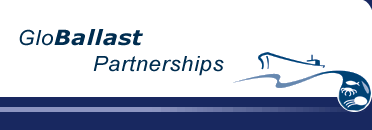The IMO Technical Guidelines
Technical Guidelines to support the BWM Convention
A number of technical guidelines have been developed and adopted since MEPC 53 to support the uniform implementation of the BWM Convention.
The available Guidelines, which are contained in various MEPC Resolutions, are:
- Guidelines for sediments reception facilities (G1)
- Guidelines for Ballast Water Sampling (G2)
- Guidelines for ballast water management equivalent compliance(G3)
- Guidelines for Ballast Water Management and Development of Ballast Water Management Plans (G4)
- Guidelines for ballast water reception facilities (G5)
- Guidelines for Ballast Water Exchange (G6)
- Guidelines for Risk Assessment under Regulation A-4 (G 7)
- Guidelines for approval of Ballast Water Management Systems (G8)
- Procedure for Approval of BWM systems that make use of Active Substances (G9)
- Guidelines for approval and oversight of prototype ballast water treatment technology programmes (G10)
- Guidelines for Ballast Water Exchange Design and Construction Standards (G11)
- Guidelines for sediment control on ships (G12)
- Guidelines for additional measures including emergency situations (G13)
- Guidelines on designation of areas for ballast water exchange (G14)
- Guidelines for Ballast Water Exchange in the Antarctic Treaty area
Two further Guidelines are being prepared:
- Survey Guidelines for the purpose of BWM Convention
- Guidelines on PSC under the BWM Convention
IMO Assembly Resolution A.868(20) - “Guidelines for control and management of ships’ ballast water to minimize the transfer of harmful aquatic organisms and pathogens”.
Since the late 1980s the IMO has been actively engaged in seeking a solution to the ballast water problem. Initially, following extensive consideration of the available information IMO developed and issued a set of Guidelines in 1991; these were subsequently replaced in 1997 by an updated version: the “Guidelines for control and management of ships’ ballast water to minimize the transfer of harmful aquatic organisms and pathogens”. Following this, the IMO began working towards completion of an international legal instrument, with the International Convention for the Control and Management of Ships’ Ballast Water and Sediments being adopted by consensus at a Diplomatic Conference at IMO Headquarters in London on 13 February 2004.
In 1991 the IMO Marine Environment Protection Committee completed its Guidelines for Preventing the Introduction of Unwanted Organisms and Pathogens from Ship’s Ballast Waters and Sediment Discharges (MEPC Resolution 50 (31) in 1991); this was subsequently confirmed by the IMO Assembly Resolution A.774 in 1993.
These Guidelines, which were voluntary, were aimed at providing Administrations and port State authorities with a range of information on the issue and suggested procedures to better manage ballast water and thus prevent the risk from the introduction of unwanted aquatic organisms and pathogens.
The initial Guidelines referred to above were enhanced in 1997 with more up to date information and advice and in November 1997 IMO adopted the Assembly Resolution A.868(20).
- These updated Guidelines included new advice on how to lower the chances of taking on board harmful organisms along with ballast water, such as :
- Minimizing the uptake of organisms during ballasting, by avoiding areas in ports where populations of harmful organisms are known to occur, in shallow water and in darkness, when bottom-dwelling organisms may rise in the water column.
- Cleaning ballast tanks and removing on a regular basis, sediments that accumulate in the tanks and which may harbour harmful organisms.
- Avoiding unnecessary discharge of ballast.
- Undertaking ballast water management procedures, including exchanging ballast water at sea; non-release or minimal release of ballast water; and discharge to onshore reception and treatment facilities (if available).
The Guidelines contained in Resolution A.868(20) were important building blocks for the Ballast Water Management Convention and its associated Technical Guidelines.




